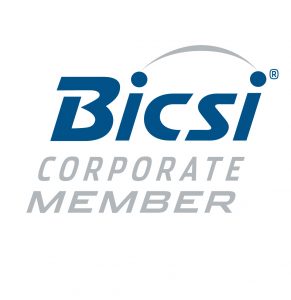
The POL Advantage – Game-Changing Network Solutions
Passive Optical LAN, or POL, is becoming one of the fastest-growing transmission topology for new cable installations and modern upgrades. An Optical Splitter based networking solution replaces the existing LAN connections as well as traditional network switches with an individual high capacity cable; transmitting information to connect the end user directly with the data centre by sending light signals through an optical fibre. The shareable POL system with multiple infrastructure capabilities has the radius range of 20 kilometres versus the average 300 feet range of legacy copper wiring.

POL Cost-Efficient Cost-Effective Advantages
• Long-term Solution Decreases the Cost of Ownership by up to 68%
• AXSvision System Reduces Management Investments due to Ease of Use
• Single Fibre Optical Cable Lowers Installation Expenses
• Nonessential Communication Room Minimizes Real Estate and Cooling Costs
• Smooth Integration to Existing Cable Systems Lowers Overall Infrastructure Costs
Lower Overall Infrastructure Costs with Fibre Optics
Fibre optic technology is an ideal continuing investment, costing less to maintain, experiencing less downtime and requiring less networking hardware. Case studies show that the accurately designed fibre optic system of AXIS Technical Service will last for extended periods of time without any maintenance, offering decreased repair costs and therefore lowering the cost of ownership by up to 68%.
Moreover, as optical fibres are composed of glass they are neither chemical sensitive nor water sensitive, and are thus generally corrosion free. Consequently, AXISTECH’s Passive Optical LAN solution flourishes in otherwise harsh living conditions by eliminating the risk of destruction from corrosive elements, such as direct soil contact. These superior characteristics are exclusive to fibre links and effectively reduce the expenses of network maintenance and service.
Although optical fibre lines are ultimately more cost-effective than copper, the initial cost has traditionally been pricier. Fortunately, the price of fibre cable, components and hardware has steadily decreased in recent years, and the premium demand for the supreme specification cables have increased the price of copper. As a result, the present short-term costs of both cabling choices are virtually equivalent.
Substantial savings can also be realized with sizeable installations when the network is arranged without the limitations of archaic copper designs and with the broad access of fibre optics. Fiber optic cables have an extended reach, removing the requirement for copper’s need for communication closets. Omitting the installation of nonessential communication rooms, air conditioning and ventilation simplifies the network layout, nearly halving the real estate and cooling costs.
Similarly, existing data centres seeking to modernize their network have the potential to economize as well. When installing the Passive Optical LAN into a current infrastructure, fibre provides smooth integration, once again shrinking high-priced installation costs.

Greater Value and Peace of Mind
• Advanced Security Features Ensure Decryption to be Virtually Impossible
• Fibre Infrastructure Provides a Link to any Ethernet Source
• Installation Process Minimizes Construction Delays and Errors
• 25 year Life Cycle Corresponds with the 25 year Manufacture Warrantee
• Fibre Optic Transport Guarantees Increased Wiring Distance Flexibility
Recognized Industry Benchmark
The fibre optic signal is composed of light, which affords minimal signal loss during transmission; therefore data moves at much greater speeds and distances. Up to double the bandwidth can be achieved with fibre optics, while weighing about half that of copper. As the fibres are non-conducting, and require low voltage, they are safe in most electronic environments.
Higher voltages, like those required by a traditional copper cable, are a safety hazard, a reliability, and a maintenance issue as discharges happen more frequently. This also means less electricity is being used by fibre optics resulting in lowered utility costs, as well as a less negative environmental impact.
With the high number of cables being produced each day, the carbon footprint from these factories is substantial. However, the production of the copper cable entails 28 Kilos of raw materials while only 5.4 Kilos is required to make fibre optics.
The only true advantage copper has to fibre optic cabling is it’s low initial price. Fibre optic installation costs are higher than copper due to of the skills required for termination. However, over time, fibre is more cost-effective and scaleable.
Fibre typically costs less to maintain, requires less networking hardware and has much less downtime. And as previously mentioned, the fibre has much larger bandwidth capabilities, eliminating the need for re-cabling for improved network performance. These advantages, as well as the ever-decreasing cost, make fibre optic cabling the best choice for business needs.

Greener and Safer Advantage of POL
• Optical Fibres Cut Power Consumption by up to 60%
• Removal of Copper and Plastic Reduces the use of Non-Renewable Materials
• Fibre Optic Cable Installation Augments Space Availability by 50%
• Elimination of Plastic Wires Provides a Non-Flammable Alternative
POL – A More Protected and Environmentally Sustainable Strategy for Data Centres
The Axis Technical Services fibre-based connection system provides an eco-friendly networking solution to traditional copper wiring. Overall, AxisTech’s Passive Optical LAN advantages ranging from price-efficiency to reliability, but none of these benefits are quite as underappreciated as the environmental sustainability of fibre optic cabling. Future-oriented, energy-efficient measures implemented today will have a tremendous impact in the mid-term future; consequently, sustainability has become the new frontier of corporate innovation.
Consider a data centre, of which there are hundreds of thousands globally. It takes approximately 2,450,000,000 watts of electricity annually to power one of these centres, which is the equivalent of the yearly electrical output of three nuclear power plants. Most of the data centres, however, use copper wiring as their primary source of circulating electricity.

A Full Range of Project Capabilities
At AxisTech we apply technology-forward strategies while providing a customer-first approach to our long term business relationships. We are proud to deliver our network infrastructure solutions on time and on budget. We invite you to experience the AxisTech difference.
> Call 604 559 AXIS (2947) or email ROI[at]AxisTech.ca to schedule a needs assessment with our management team



